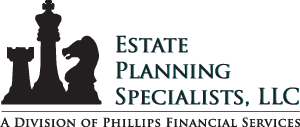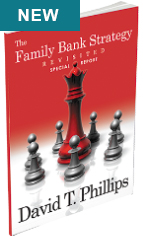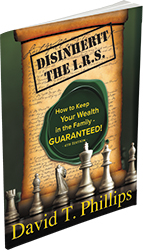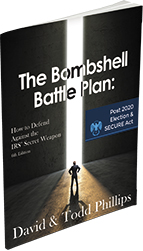
Bob Carlson's - August 2013

A Fiscal Pain for Many Retired Americans
A fiscal pain for many retired Americans are required minimum distributions from traditional IRAs and other qualified retirement plans. Calculating the distributions and withdrawing the money are chores. People worry about making a mistake that will trigger the 50% penalty. The problems are likely to get worse in coming years as Congress grabs for more revenue.
The tax code requires you to begin distributions after age 70.5, whether you need the cash or not. Each year as you get older, the RMD schedule increases the percentage of the IRA that must be distributed. That's fine when your spending needs equal or exceed the RMDs. But many people have multiple sources of income and large IRAs. They don't need all of the forced distributions. The distributions increase income taxes and can push you into a higher income bracket that triggers higher Medicare premiums and other problems. Many people simply want to let their IRAs accumulate so they can serve as emergency spending accounts or legacies for their heirs.
Already several proposals to make this worse are floating through Washington. The proposal receiving the most attention would curtail the "stretch IRA" that allows your nonspousal beneficiaries to draw down an inherited IRA gradually over their life expectancies and require the IRA to be distributed and taxed within five years. In the past I've recommended several solutions that deal with an IRA that's "too big" or to prevent the forced distribution problem long before it starts.
For example, anytime after age 59.5 you can draw down the IRA early, either in a lump sum or gradually over time. Pay the taxes early and have the balance invested in a taxable account where it qualifies for tax advantages such as the 20% top rate on long-term capital gains and qualified dividends. Also, when your heirs inherit, they aren't forced to liquidate the assets and can increase the tax basis to its current fair market value, avoiding taxes on all the appreciation during your lifetime.
A related strategy is to convert the traditional IRA to a Roth IRA. Again, you pay income taxes on the conversion. Once the money is in the Roth IRA, however, the income and gains will compound tax free and future distributions will be tax free to you and your heirs. You won’t have to worry about RMDs, and your heirs under current law can take RMDs over their life expectancies.
Many people object to paying taxes before they have to, so they don't want to draw down their IRAs early or convert to a Roth IRA. For those people and for those who want to use their IRAs to generate more wealth for their heirs, I've found strategies that can turn your RMDs into assets and leverage them into substantial wealth for your families. Let's look at two examples. Before we dive into the examples, remember the annual gift tax exclusion. In 2013 you can give anyone up to $14,000 free of gift taxes, and a married couple can give jointly $28,000. The amount is indexed for inflation. A married couple with three children can give a total of $84,000 annually ($28,000 each) to their children gift-tax free each year. The gifts are tax free whether given directly or transferred to an irrevocable trust. We'll use this tool in these strategies.
The first option we call the Wealth Creation RMD Leverage Strategy.
Let's say Max and Rosie Profits are each age 75 and in good health for their ages. Max has a $500,000 IRA. He doesn't need to draw down the IRA for living expenses because of his other income sources. His RMD this year will be $21,834. The Profits have two adult children and three grandchildren ages 11, 13, and 15. The adult children are doing fine, so the Profits primarily would like to provide for their grandchildren. They don't want to give in lump sums. Instead, they want gifts and distributions to be based on accomplishments or age. The Profits want to provide a financial head start or boost.
To leverage the RMDs, the Profits create what estate planners call an Irrevocable Dynasty Trust. Each year the Profits contribute an amount equal to this year's RMD to the trust. The trustee (who is usually an adult child) acquires a joint and survivor life insurance policy (JLS) on the lives of both Profits and uses the annual contributions to pay the premiums and other trust expenses. At the Profits' age and health, the RMD amount of $21,834 should create a JLS policy with a face value of $931,212.
After both the Profits pass away, the trustee will receive the policy's face value of $931,212 from the insurer. These benefits will be tax free to the trust, and the trustee will distribute them tax free to the grandchildren under terms set by the Profits in the trust agreement. If the second spouse passes away after 20 years (at age 95), the Profits would have deposited $436,680 of the RMD ($21,834 x 20 = $436,680) to generate the $931,212 in benefits for their grandchildren. That's a 2.13 to 1 return. Compare the results with drawing down the IRA over those 20 years and investing it in traditional investments. Of course, if the surviving spouse passes sooner, the return is even higher.
Keep in mind that this isn't one of those complicated life insurance policies in which the premiums and face value of the policy change based on fluctuations in the stock market or other factors. The face value of the policy is fixed when the policy is acquired by the trust, and it and the premiums will be the same regardless of whether the Profits live for one year or 30 years and what the markets do.
Also, while at least one of the Profits is alive and paying premiums from the IRA distributions, the policy will generate a cash accumulation account that can be borrowed against or used to pay future premiums by the trustee. After 10 years this account is estimated to be $118,801, and it should be $280,431 after 20 years. This is not an addition to the policy's face value.
The second option for the Profits is the Family Bank RMD Leverage Strategy. This strategy is very similar but uses a slightly different type of insurance policy that has a lower face value or life insurance benefit but should create a larger cash accumulation account. In the Max and Rosie Profits example, the life insurance benefits would be $834,853. The cash value account is estimated to be $204,398 after 10 years and $471,979 after 20 years, assuming the current earnings rate of 5.2%.
The reason to use the Family Bank Strategy is the cash value account is more readily available and still is both tax-free and cost-free.
The rules are complicated, but with the right JLS policy, loans are cost-free or very close to it. The grandchildren or other heirs don't need to wait for the Profits to both pass away to have ready access to the cash value account. The trustee can tap the account to pay for family emergencies, education, business or investment opportunities, or for other expenses. These expenditures will reduce the eventual policy benefits if the loans aren't repaid, but they are available without a real cost to the family.
While I used a married couple in these examples, the strategies also are effective for unmarried people. When comparing all the strategies, you'll find that while the Profits are alive, maintaining the current IRA or converting it to a Roth IRA would have a higher liquid asset balance than either the Wealth Creation RMD Leverage or Family Bank RMD Leveraged Strategies. The Family Bank RMD Leveraged Strategy would have a substantially higher lifetime cash account value than the Wealth Creation RMD Leverage Strategy. But the Wealth Creation RMD Leverage and Family Bank RMD Leverage Strategies generate much higher final values for the heirs in the long term. The Wealth Creation RMD Leverage Strategy generates more long-term value than the Family Bank strategy.
Choosing either of the life insurance strategies immediately increases the value of the Profits' estate, because the policy face value is far higher than the current IRA balance. It would take decades of high returns for an IRA to equal the value of the life insurance benefits. Plus, the IRA distributions would be taxed as ordinary income to the grandchildren, while the insurance benefits would be tax free. There's also the free value of the cash account. Also, if your estate might be taxable at either the federal or state level (or both), consider that an IRA would be taxed while the dynasty trust would avoid the estate and inheritance taxes.
IRA owners who don't expect to need their full balances and want to turn RMDs from a nuisance to an asset should consider using RMDs to purchase the right kind of life insurance. Leveraging the value of the IRA, significantly increases what will be available to your heirs tax free, regardless of what the markets do.
There aren't many specialists in the country who can effectively implement these strategies. Estate Planning Specialists, a firm founded in 1988 by David T. Phillips, is one and published a White Paper on them. They can also prepare a personalized illustration for you based on your individual circumstances. David recently updated his book, The 10 Most Common Estate Planning Mistakes and How to Avoid Them, available on Amazon.com for $14.95. I made special arrangements with David for my subscribers to receive all three for $10.95:
- The IRA Required Minimum Distribution Leveraged Strategy White Paper;
- A personalized illustration on the strategies; and
- The recently updated book, The 10 Most Common Estate Planning Mistakes and how to Avoid Them...
Call their toll free number 1-888-892-1102 and mention you're a Retirement Watch member.




